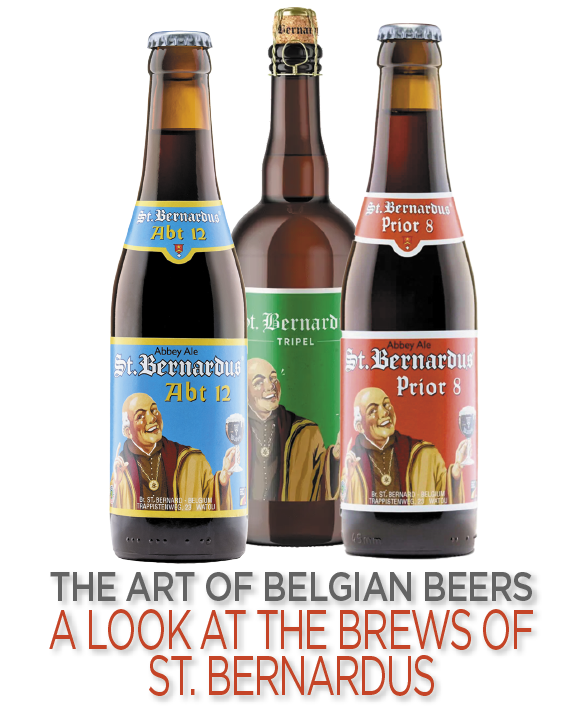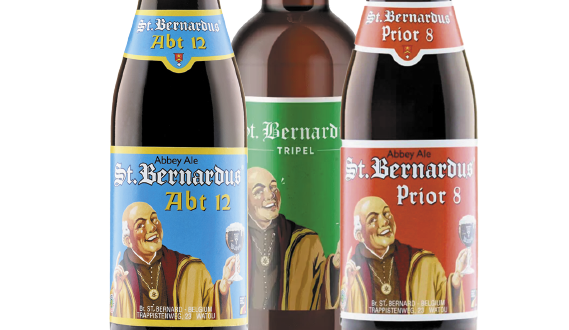THE ART OF BELGIAN BEERS
 by ANDY CROUCH
by ANDY CROUCH
The Belgian beer scene has long influenced the development of craft beer within the United States and around the world. With centuries of developing and mastering eclectic styles and fostering a deep respect for flavorful brews, Belgium holds a special place in the pantheon of great beer. In recent years, however, the popularity of Belgian beer and even Belgian-style beer has started to wane in the United States. Flavor preferences change and the often spicy, full-bodied, and higher alcohol levels found in Belgian beers have given way to consumer desires favoring juicy, hazy IPAs and even lagers.
Once largely focused on exporting their beers to the American marketplace, Belgian brewers now look to other nations, including Japan and China, to buy their beers. Despite hosting nearly 1O,OOO breweries, it is rare in the United States to find a new brewery open that focuses in large part on producing Belgian beers. American brewers of Belgian-style beers, including big names such as Ommegang and the Lost Abbey, have often pivoted away from the moribund styles in favor of more dynamic and popular beers such as hazy IPAs. The first American Trappist brewery, Spencer Brewery of central Massachusetts, closed in 2O22 after less than a decade in operation.
Among the Belgian breweries that remain active in the American market, St. Bernardus is one the most respected. The history of brewing at St. Bernardus, which is based in the village of Watou in the far West Flanders region of Belgium, is complicated and intertwined with that of the nearby monastic operation, St. Sixtus, which produces the famed Westvleteren line of beers. According to St. Bernardus, St. Sixtus limited sales of its beer to the public in 1945, a practice that continues to this day. The monks then licensed their beer production to St. Bernardus. The brewmaster from Westvleteren, Mathieu Szafranski, joined the new brewery and brought along the house recipes and yeast strain. The brewing agreement between St. Sixtus and St. Bernardus ended in 1992, when the monastery brought all production back in house. Since 1992, St. Bernardus has brewed its own line of beers that many believe closely resemble those of Westvleteren in both terms of flavor and quality.
ABT 12 alcohol by volume 1O%
The St. Bernardus Abt 12 is widely considered one of the best beers in the world. Long rumored to be a clone of the famed Westvleteren 12, there are definitely differences between the two beers but the Abt 12 remains a beautiful beer in its own right. The Abt 12 is a big Belgian quadruple style offering and is certainly the most potent offering in the solid St. Bernardus lineup. While not Trappist by direct pedigree, it is brewed to a recipe dating to 1946.
The Abt 12 pours with a deep mahogany color and a surprisingly light off-tan head of sustained foam. The aroma is filled with dark fruit, including cherry, raisin, and fig, as well as freshly baked bread, toffee, touches of brown sugar, along with cleansing notes of spice and clove. The alcohol is present in the nose but not in an overwhelming way. The Abt 12 benefits from service at a slightly warmer temperature. When served too cold, it shows a slightly bitter edge. The flavor follows the aroma, with big sweet dark fruit notes over breadier elements and finishes with a lightly warming alcohol note rounded out by cloves and spicy yeast notes. At 1O percent alcohol, care should be taken with this surprisingly light bodied beer. While the brewery suggests a four year shelf life, the Abt 12 is capable of aging for quite some time and gains complexity and maturity with each passing year.
TRIPEL alcohol by volume 8%
The St. Bernardus Tripel is a traditional example of the classic Belgian style. Most Trappist breweries offer a version of the Tripel style, which packs loads of flavor and aromas into a tightly controlled beer. Breweries often bottle-condition their Tripels, which involves adding a small amount of live yeast to the post-fermentation beer to allow it to re-ferment after packaging. Tripels are deceptively complex, with aromas boasting juicy passion fruit and banana notes, phenolic yeast hints, sizable pale malt bases, and robust yet coy alcohol traces. A classic Tripel’s body is equally mesmerizing, converting all of the aromas into an intricate web of playful flavors, with spicy yeast notes tempering warm malt, candi sugar, and fruity alcohol elements.
The St. Bernardus Tripel is unsurprisingly a great version of the famed style. Pouring with a beautiful slightly hazy golden hue and a sizable and sustained white head, the aroma fills with sweet malt, candi sugar, light fruit phenolics, and a touch of spice. The flavor continues with a burst of sweet malt followed by a wash of alcohol and finishing with a long drawn out and balanced herbal and spicy bitterness. Easy drinkable, this Tripel hides its alcohol well, requiring some care on the part of the drinker.
PRIOR 8 alcohol by volume 8%
As a complement to its blonde Tripel brother, the Belgian Dubbel style is a feisty blend of intricate malt flavors and layered spicy hints. Hitting with a double punch of both aroma and flavor complexity, Dubbels remain closely associated with Belgian monastic brewing but have experienced a harder transition in the United States. Many American breweries have tried their hand at the style but routinely produced and available commercial versions remain elusive. So that is why lovers of this spicy and malty sensation often need to return to the classics.
Prior 8 is a fantastic version of the style. Pouring medium brown with slight reddish hints, the medium to full-bodied Prior 8 shows a strong carbonation level, with a plentiful and persistent off-white head. The aroma fills with dancing notes of dark fruit, plums and cherries, alongside spicier phenolic notes, with further hints of raisins and a well-balanced but present warm alcohol touch. As with most Dubbels, the Prior 8 employs no spicing in the beer but instead relies on its clovey yeast strain to achieve the rich character. The flavor continues in the direction suggested by the nose, with big dark fruit notes playing well alongside spicy hits from the yeast and even touches of roasted malt, and a light residual sweetness.

